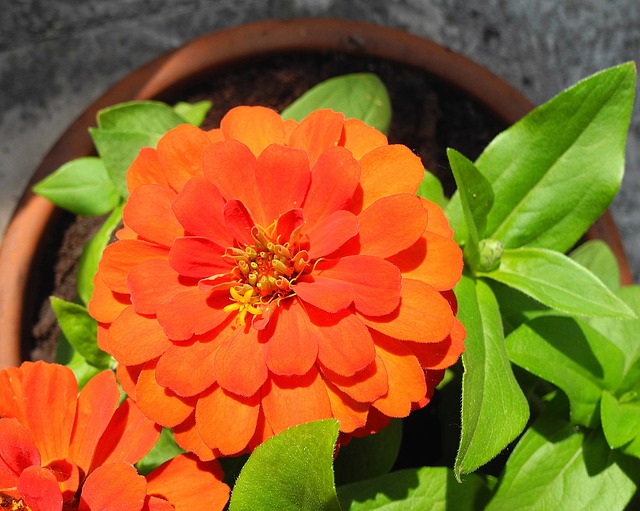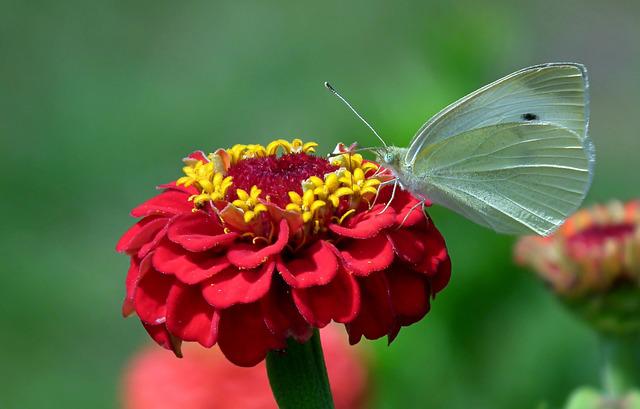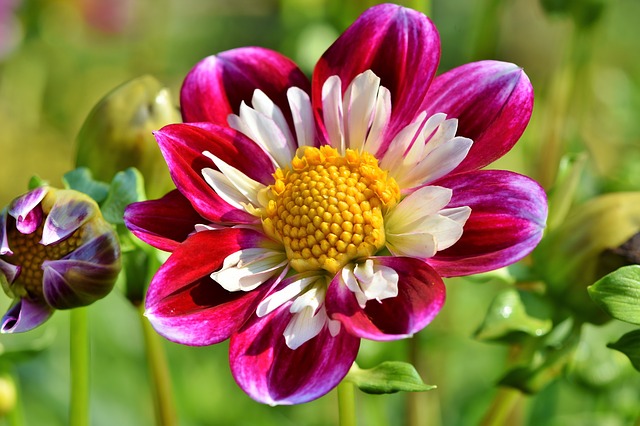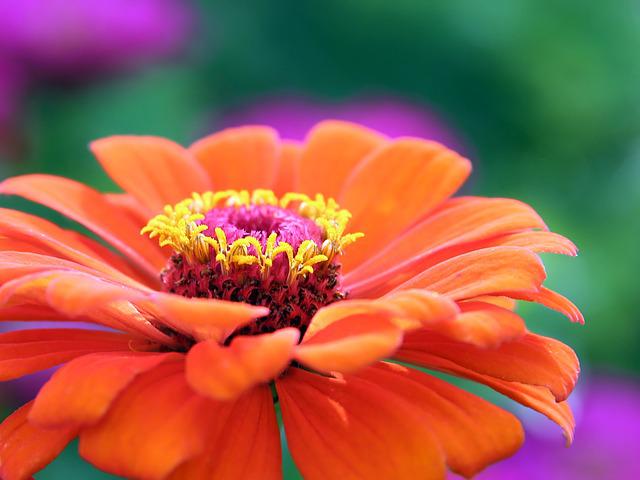Can Zinnia Grow in Pots?

Zinnia can grow in pots. For them to thrive, choose a pot that is at least 6 inches deep. There is not much difference between growing zinnias in gardens and pots. These flowers are usually large and bushy, requiring a lot of light to produce fruits or flowers. Zinnias might not be ideal if you live in a darker location or want smaller flowers that stay small throughout the summer. You might be interested more in growing zinnia in pots. Here are some tips on how to grow zinnias successfully in pots.
Table of Contents
Tips for Growing Zinnia in Pots Successfully
Choosing a Pot for Zinnias
Choosing the correct container is essential to growing zinnia successfully. Fortunately, that’s not too challenging. These plants are quite flexible and do well in many containers.
Size
The container’s size should be taken into account first. The cultivar affects both the spread of the roots and the foliage. However, when it is completely developed, your plant will likely measure one and a half feet wide.
This isn’t at all large compared to other plants.
You can select a pot that is only 6 inches across for a single plant. But you don’t have to end there. To grow multiple zinnia plants in one container for a full and lush appearance is simple. Three plants can be supported in a 10-inch pot. A 14-inch pot will hold five people, meanwhile.
Design and Material
Materials don’t matter to zinnias. They thrive in virtually any container as long as it has enough space to accommodate their growth. You can use repurposed wood containers, more opulent ceramic pots, or less expensive plastic containers. Window sill and hanging baskets are excellent places for these plants. Choose a container wide enough to hold the plant, which should be at least 6 inches wide.
Sterilization
Many gardeners forget to undertake this simple task. Sterilize the container if it was previously used to house another plant. Even newly purchased pots may need to be sterilized if they are kept near plants.
Diseases and fungal spores can quickly spread in pots. You don’t want the disease to strike your prized flower plant before it blooms, do you?
To sanitize the pot, soak it in bleach that has been diluted. Combine the bleach with the water in such a way that the bleach makes up no more than 10% of the final solution. Before washing it with water, the pot should be let soak for approximately one hour first.

Getting the Soil Ready
Most soils are no match for Zinnia plants, which grow quickly and easily adapt to their surroundings. However, going through your work with a fine-tooth comb is still a good idea. Potting soil should be used. After that, incorporate some organic compost into the mix. As a result of the compost, the mixture will become more fertile. Compost is an excellent fertilizer when growing zinnias in pots, and I’ve produced a piece to explain how to apply it.
In addition to loosening the dirt, the mixing procedure facilitates proper drainage. It’s possible to go one step farther and measure the pH. Zinnias prefer a pH range of 5.5 to 7.5 in their soil. Some acidity is always a good thing. A small amount of peat moss can be added to the mixture to achieve the desired results.
Watering
Zinnias require a lot of water to produce their stunning blooms. A constant supply of moist soil is essential for these plants, as they are notoriously thirsty.
Now, this does not imply that you should overwater your plant. There is a real risk of fungal infections, as I’ve already mentioned. Root rot is another example of this. You don’t want to harm your plant’s development by drowning it or other means.
A delicate balancing act must be performed to avoid dehydrating the soil too much. Zinnias need about an inch of water every five to seven days, but this can vary. Depending on the weather, this could be more or less. Watering your plant more frequently may be necessary for extremely hot weather.
Check the soil before you hydrate the plant. At a minimum, the soil should be kept moist to a depth of six inches. In particular, for young plants, this is critical. Wet soil is less of a problem for established plants. Regardless, the soil should always be kept moist if you want your plants to thrive.
When watering the plant, direct the stream toward the roots. Leaves and flowers should remain dry. Attempting to do so will only encourage the growth of fungal spores.
Sunlight
Zinnias, which originated in Mexico and are native to the region where they grow best, thrive in full sun, so plant them where there will be plenty of direct sunlight. Plant taller varieties in a sheltered spot where they will be protected from the wind. Then sit back and admire these sun-kissed beauties as they rise.
Fertilizer
Zinnias would do well with a small amount of fertilizer. A 5-10-5 product that dissolves in water is suggested if you need to use fertilizer. This mix is good for zinnias because it is low in nitrogen and potassium. The high amount of phosphorus in the fertilizer would help plants turn other nutrients into energy. To keep the fertilizer schedule simple, put the fertilizer on the zinnias when you water them.
Deadheading
Zinnias should be deadheaded or picked frequently to ensure that they continue to bloom and look beautiful into the fall. Remove the growing leaves from the stem before cutting them.

The Best Time to Plant Zinnia
When the nights are warm in May or June, plant the seeds directly into the ground to avoid disturbing the roots of your zinnias. But you can plant them in gutters or Jiffy pellets indoors in April or May and then move them outside when there is no more chance of frost.
Zinnias mature in a matter of days, making them an excellent choice for beginners. Once the weather warms up, you’ll see rapid growth in your plants, whether you started them from seed or young seedlings.
For the plant to begin blooming, it typically takes about 60 days. Zinnias have a long blooming period, one of their best features. These plants will continue to bloom once they reach maturity until the weather prevents them from doing so.
Planting in Containers
- When determining how many plants to use, keep the container’s dimensions in mind. Each zinnia should be able to breathe freely close to each other. Six to ten inches should be the recommended distance between each plant.
- Make sure to choose a zinnia appropriate for the container’s size. Long-stemmed Zinnias can grow up to four feet in height, while short-stemmed Zinnias grow up to eight inches. The larger the container, the taller the zinnia.
- Potting soil containing organic matter and peat moss should be used to fill the container to about two-thirds of the way. Zinnias necessitate proper drainage, and this will help. Zinnias can tolerate a wide range of soil types, but if they are placed in a potting medium that is constantly wet, they will die.
- Place your zinnias in the best possible location on top of the soil. If you’re dealing with a variety of colors or varieties, be sure to spread them out. Taller plants go in the middle of the bed. It’s best to place the smaller plants on either side of it.
- Make a small hole in the container large enough to accommodate the plant’s root ball. After that, this procedure should be repeated for all the plants placed in the container.
- The potting mix should be poured into the remaining space in the container. The soil around the roots of the plants should be firmed up with your hand.
- The drain hole at the bottom of the container should be full to the brim with water. Using your finger, dig into the soil to see if it’s good. Give the container some water if it feels dry to the touch. Although zinnias are fairly tolerant of drought, regular watering will help the plant thrive and produce more flowers.
- Place the container in a spot that gets at least some sunlight. Zinnias thrive in areas that are warm and receive a lot of sunlight. Get the zinnias at least four hours of direct sunlight each day.
- Every two weeks, use a water-soluble fertilizer such as 20-20-20 on the zinnias. Even though they aren’t heavy feeders, a yearly fertilizer application will help them keep their green foliage and increase the number of blooms they produce.

